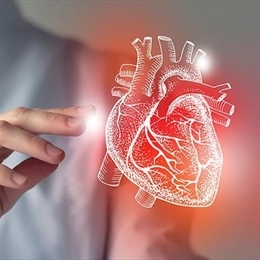Coronary Artery Bypass Grafting

Overview
Coronary Artery Bypass Grafting(CABG) is a type of surgery that rearranges the blood flow to the heart. Cardiovascular surgeons use this technique to open partially or fully clogged coronary arteries (arteries that supply blood to the heart).
Coronary artery disease (CAD) occurs when plaque (fat, blood clots, and calcium deposits in blood vessels) develops in the coronary artery. When a plaque narrows down the coronary arteries, oxygen-rich blood flow to the heart decreases. The condition is manifested by typical symptoms, such as chest pain (angina) and shortness of breath.
To overcome the problem, the stenotic or clogged segment is bypassed using a healthy artery or vein called a graft. Surgeons can bypass more than one coronary artery during an operation.
CABG allows the regression of symptoms by restoring oxygen-rich blood flow to the heart. Thus, severe heart failure, risk of future heart attack, and other heart problems can be eliminated while normal functioning of the heart is restored. However, grafting is not the only treatment option for coronary heart disease. Other treatment options include lifestyle changes, medications, and percutaneous coronary intervention (PCI), also known as coronary angioplasty. If your major coronary arteries are severely clogged and the pumping function of the heart is weak, CABG or PCI is one of the two treatment options.
Why is This Procedure Done?
Your doctor will determine if you need a coronary artery bypass graft to open the clogged coronary artery. To this end, the location and severity of the narrowing or occlusion, cardiac functions, the heart tissue, response to other treatments, and active symptoms of the diseases will be evaluated in detail by various laboratory tests and imaging studies. You will have an ECG and echocardiography; all results will be checked with relevant specialists. This comprehensive investigation aims to determine if CABG is the best and the right choice for you.
Coronary artery bypass grafting is indicated when multiple vessels are clogged, one of the main coronary arteries is severely clogged, and the pumping function of the heart is poor. The primary purpose of the coronary artery bypass graft is to eliminate or bypass the clogged coronary artery(ies). Therefore, it will not help the irreversible heart problems caused by underlying heart disease or occlusion.
Furthermore, recurrence of clogging is possible after CABG is performed to bypass the clogged coronary artery if you do not follow certain lifestyle changes. Coronary artery bypass surgery aims to increase the quality of life by relieving the symptoms, normalizing the functioning of the heart, and reducing the risk of future heart disease and heart attack.
Types of Grafts
Examining all your vessels that may be a graft determines the best type for your condition. These grafts may be an artery or a vein. While the most commonly used arterial graft is the internal thoracic artery or the internal mammary artery, the most widely used venous graft is the saphenous vein in your leg.
Risks
As is the case for all surgeries, there are some risks involved in coronary artery bypass grafting. Although all possible measures that modern medicine allows are taken to prevent the occurrence of risks, it is by no means likely to warrant that the risks will be eliminated.
Patient selection is essential in coronary artery bypass grafting.
Some of the risks that can be faced in a Coronary Artery Bypass Grafting are listed below;
• Infection in the incision line
• Cardiac rhythm disorders
• Heart attack
• Memory problems
• Chest pain
• Shortness of breath
• Issues that involve the lungs or kidneys
Our expert surgery team will employ all practices to minimize the risk of complications, and our cardiovascular surgeons will preoperatively inform you about the risks listed above and all other potential complications and will address all your concerns.
Preparation
The first phase of preoperative preparation is the same in all Medicana Hospitals. Once your doctor determines that the most appropriate treatment option for your disease is coronary artery bypass surgery, your health status is checked to see if you may undergo surgery. If necessary, you will be started on lifestyle changes and diet to prepare you better for the surgery. At the same time, the concomitant diseases, which will increase the likelihood of complications in the surgery, are also treated. After it is verified that the surgery does not pose a risk, you will be asked to quit smoking if you are a smoker and to stop taking certain medications that increase the risk of bleeding. All other prescribed and over-the-counter medications, herbal products, and supplements will also be questioned, and you will be informed to continue or stop taking them.
When these preparations are completed, and you reach the preoperative phase, the following procedures are performed.
• Review of health history
• A detailed physical examination
• •Evaluation of cardiac functions and the heart structure with ECG, Echocardiography, and coronary angiography and determination of severity of occlusion and tissue damage.
• Necessary laboratory tests and radiology studies
• Assessment by anesthesiologist and other laboratory tests and radiology studies to minimize anesthesia-related complications
You will also be instructed to stop eating and drinking at a particular time before the surgery and you should strictly follow this instruction in order to undergo the surgery at the scheduled date.
Moreover, it is reasonable to plan discharge, post-discharge accommodation, and travel at this phase to manage the postoperative period better. After coronary artery bypass grafting, it will take several weeks to recover.
Surgery and Early Postoperative Period
Coronary Artery Bypass Surgery is an open heart surgery carried out under general anesthesia. The surgery takes about 4 to 6 hours. After general anesthesia is administered, the sternum, also known as the breastbone, is cut, and the chest cavity is exposed. At this stage, your surgeon will continue the surgery with the "on-pump (beating heart)" or "off-pump (non-beating heart)" method according to the preoperative plan. For "on-pump" CABG, your heart is stopped, and a device called a heart-lung machine takes over the lungs' breathing function and the heart's pumping function. In off-pump CABG, your heart continues beating throughout the surgery.
Subsequently, the surgeon takes an artery in the rib cage (internal mammary artery), or a vein from the calf called a saphenous vein and prepares the graft. The clogged coronary artery is bypassed by connecting one end of the graft before the stenotic or occluded segment and the other after the stenotic segment. If your condition allows and your surgeon considers it appropriate, a minimally invasive technique can be used. In this method, your rib cage is not completely opened. Instead, a small incision is made on the chest wall, and the surgery is performed using video imaging methods.
You will be transferred to the intensive care unit for regular close monitoring after the surgery is completed. During your stay in the intensive care unit, all your vital signs (heart rate, blood pressure, breath rate, and other vital signs) will be closely monitored. At this stage, you will breathe through a tube in your throat.
When your follow-up in the intensive care unit is over, you will discharged to the patient room. After a few days of follow-up here, you will be removed. Before you are released, your medications will be planned and prescribed, and suggestions will be made that you need to take into account after the surgery (time to start work, engage in daily life activities, exercise, and sex life, etc.).
You should see your surgeon for scheduled follow-up visits before you are discharged. If you experience warmth and redness in your incision line or have a fever or any symptoms that you think are due to surgery after you are discharged, contact your surgeon immediately.
Results
The results of surgery are usually perfect. Surgery regresses or eliminates angina symptoms in most patients. Although the symptoms can recur, many people stay asymptomatic for many years. Long-standing results depend on using medications as instructed by your doctor and carefully following the healthy lifestyle suggestions. Do not smoke or quit smoking if you are a smoker, and you need to maintain optimal body weight and control your blood pressure, blood glucose, and blood lipids well. You may also need to start a cardiac rehabilitation program based on your doctor's directions. In this program, exercises that you need to do after CABG surgery will be planned. In terms of your health, you must attend follow-up visits on pre-scheduled dates and follow the suggestions made at each visit.
Request an Appointment at Medicana
Need any further help? Please get in touch with us.




























